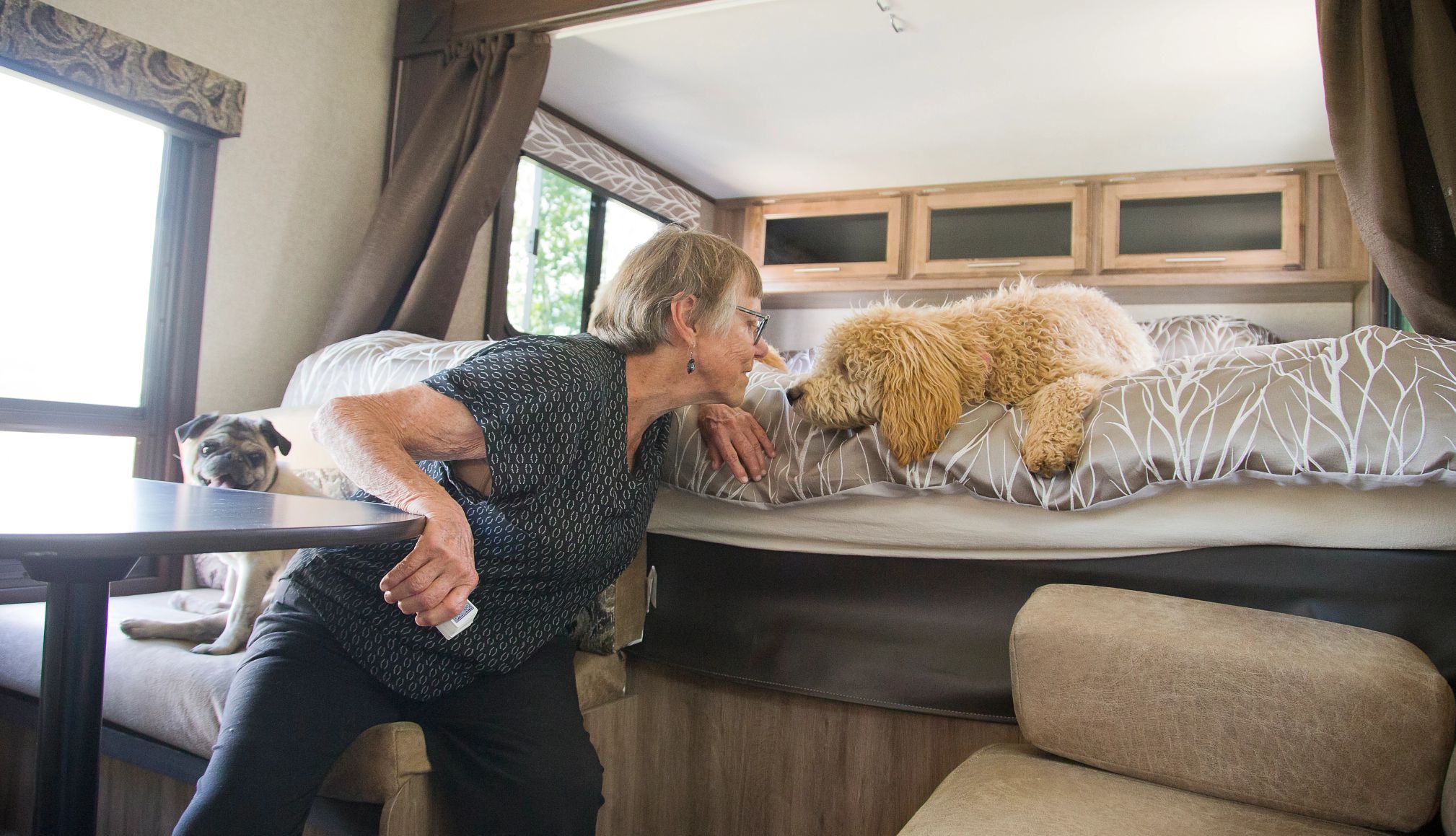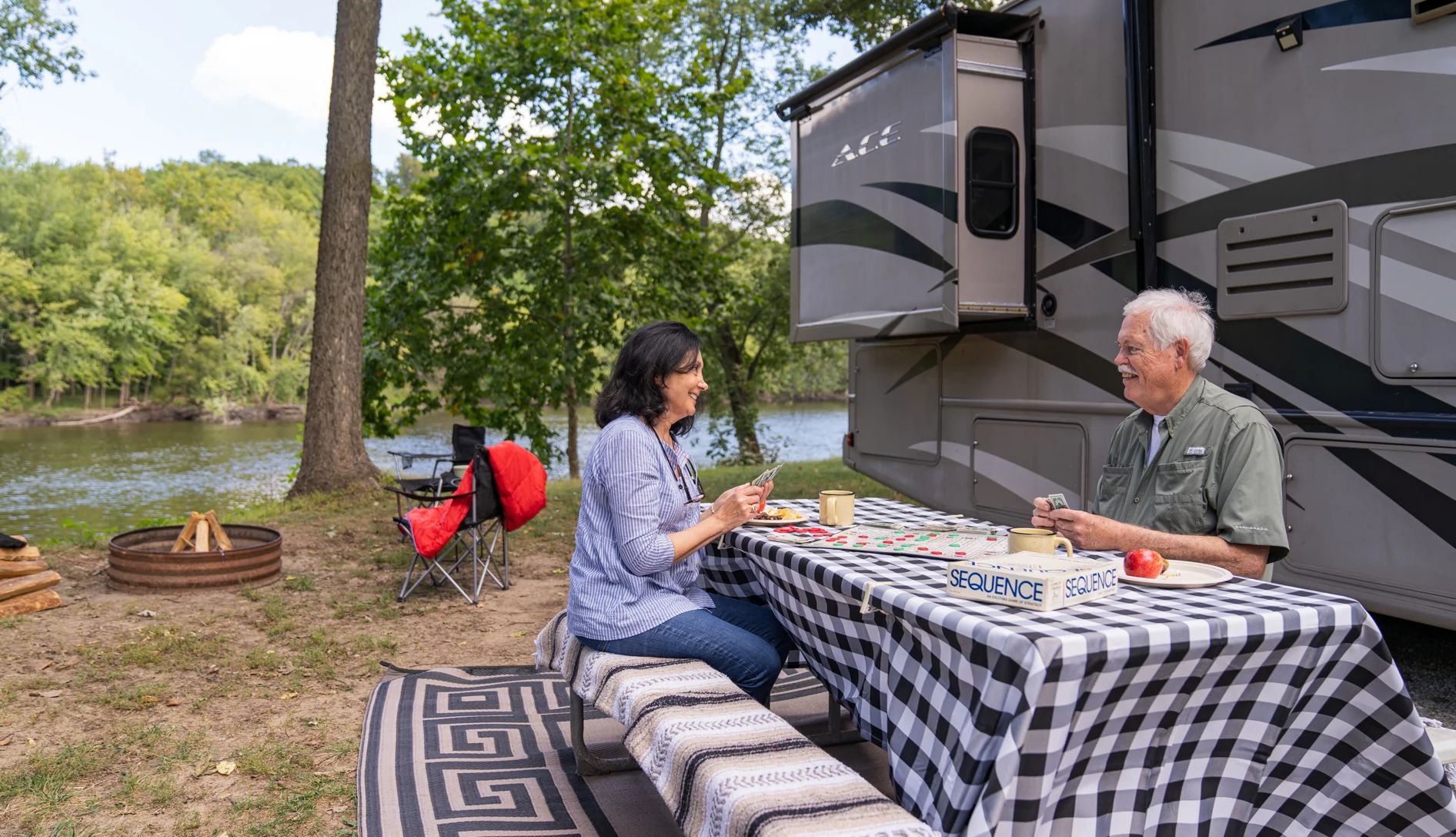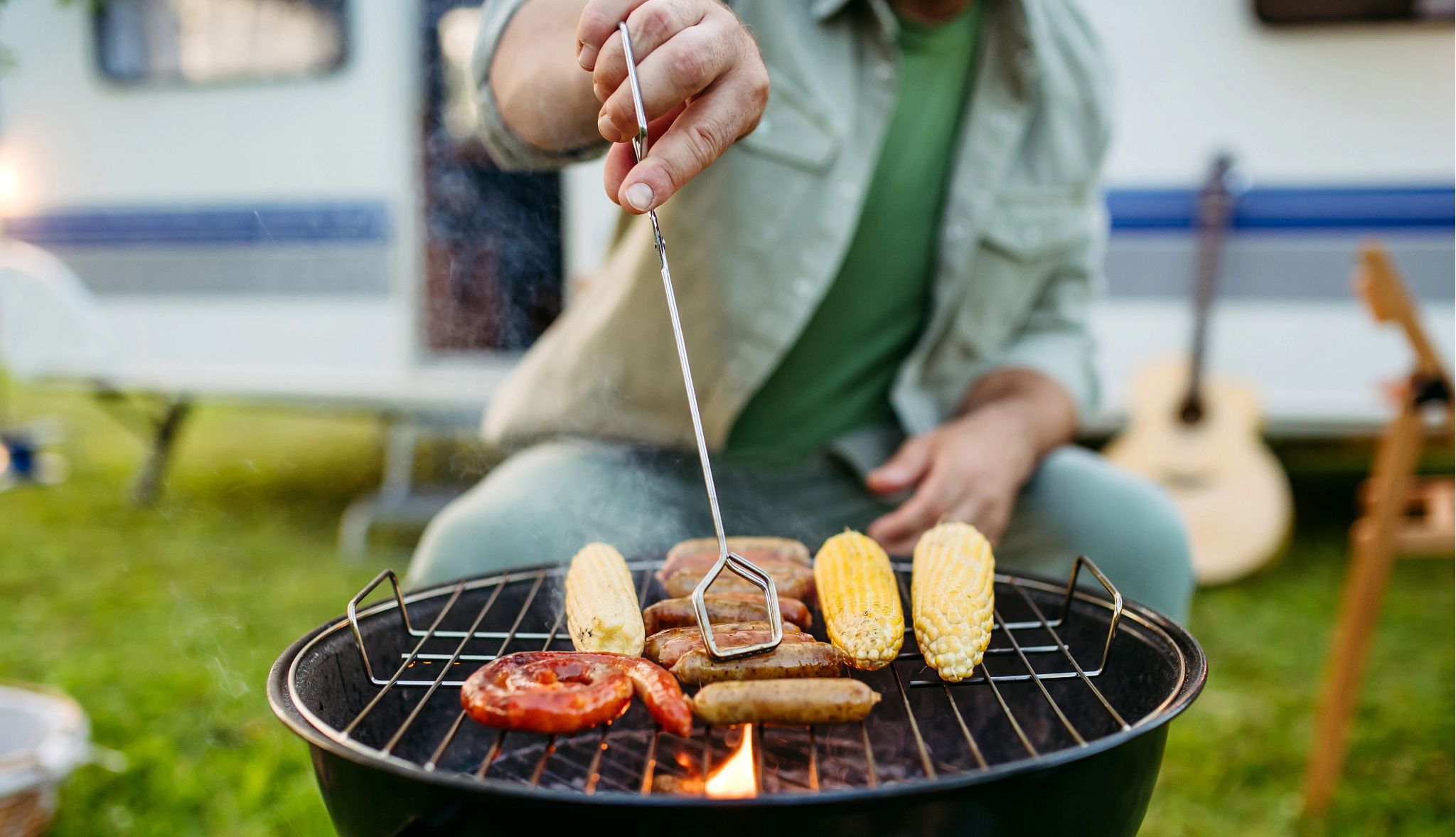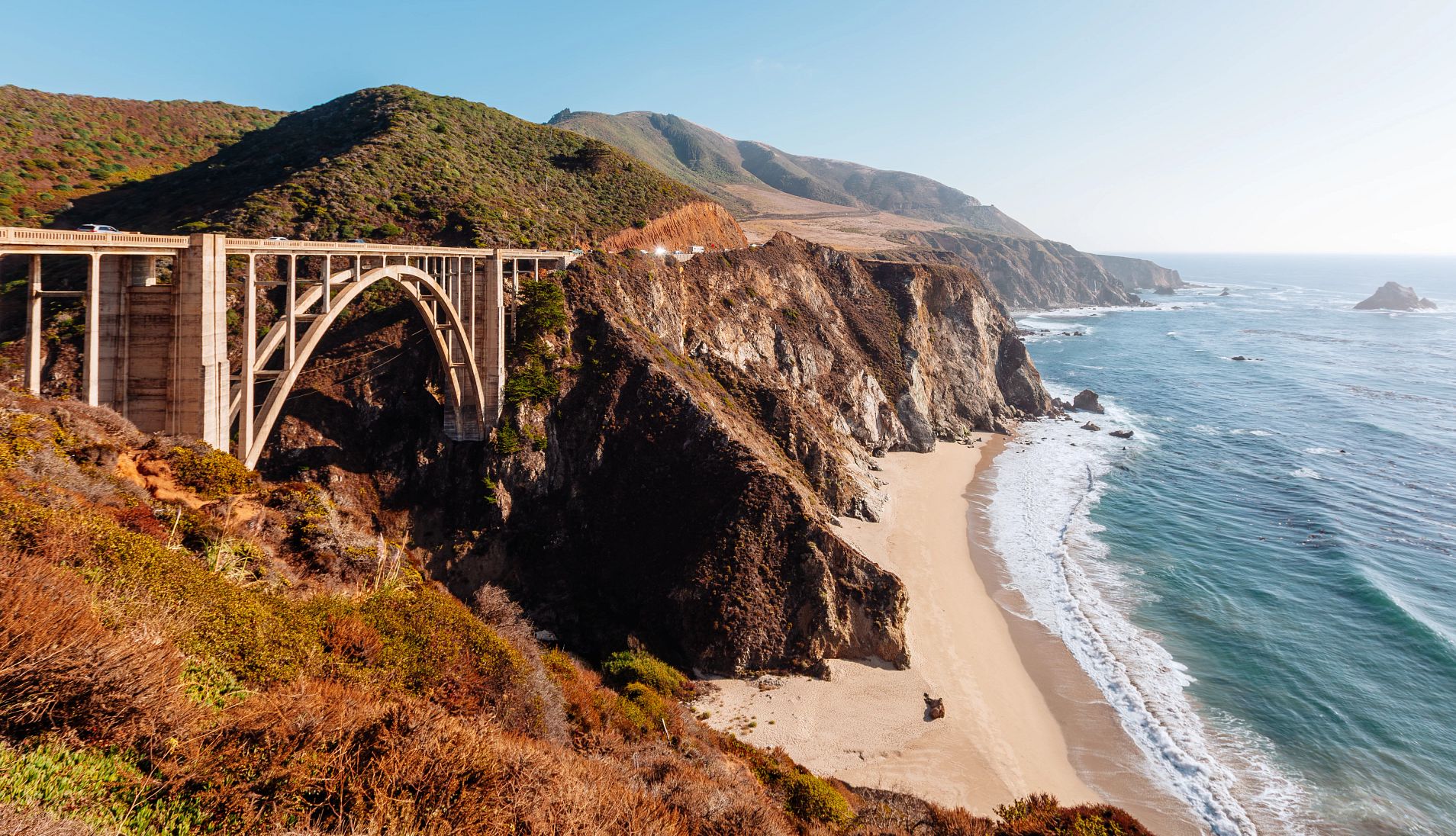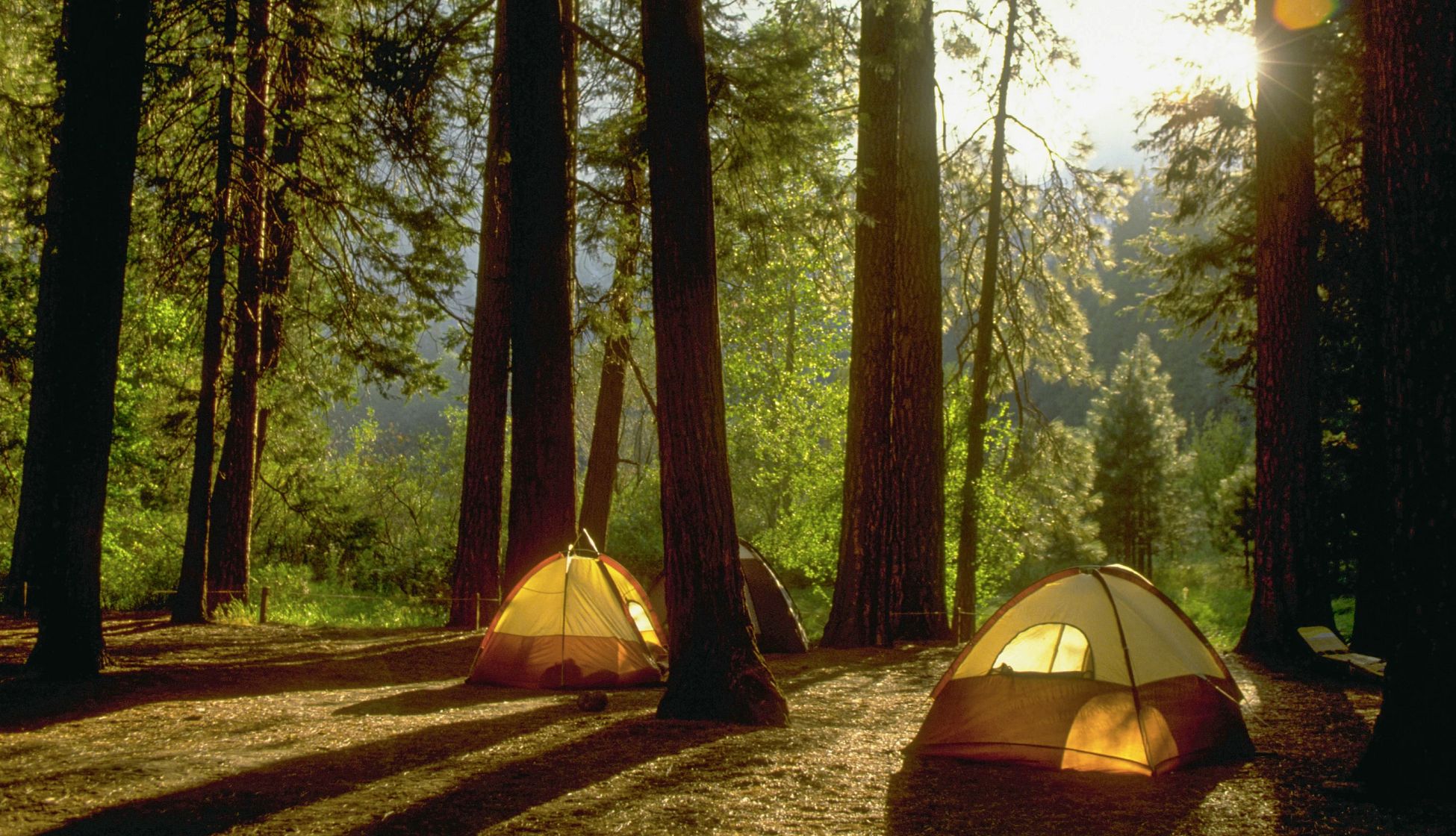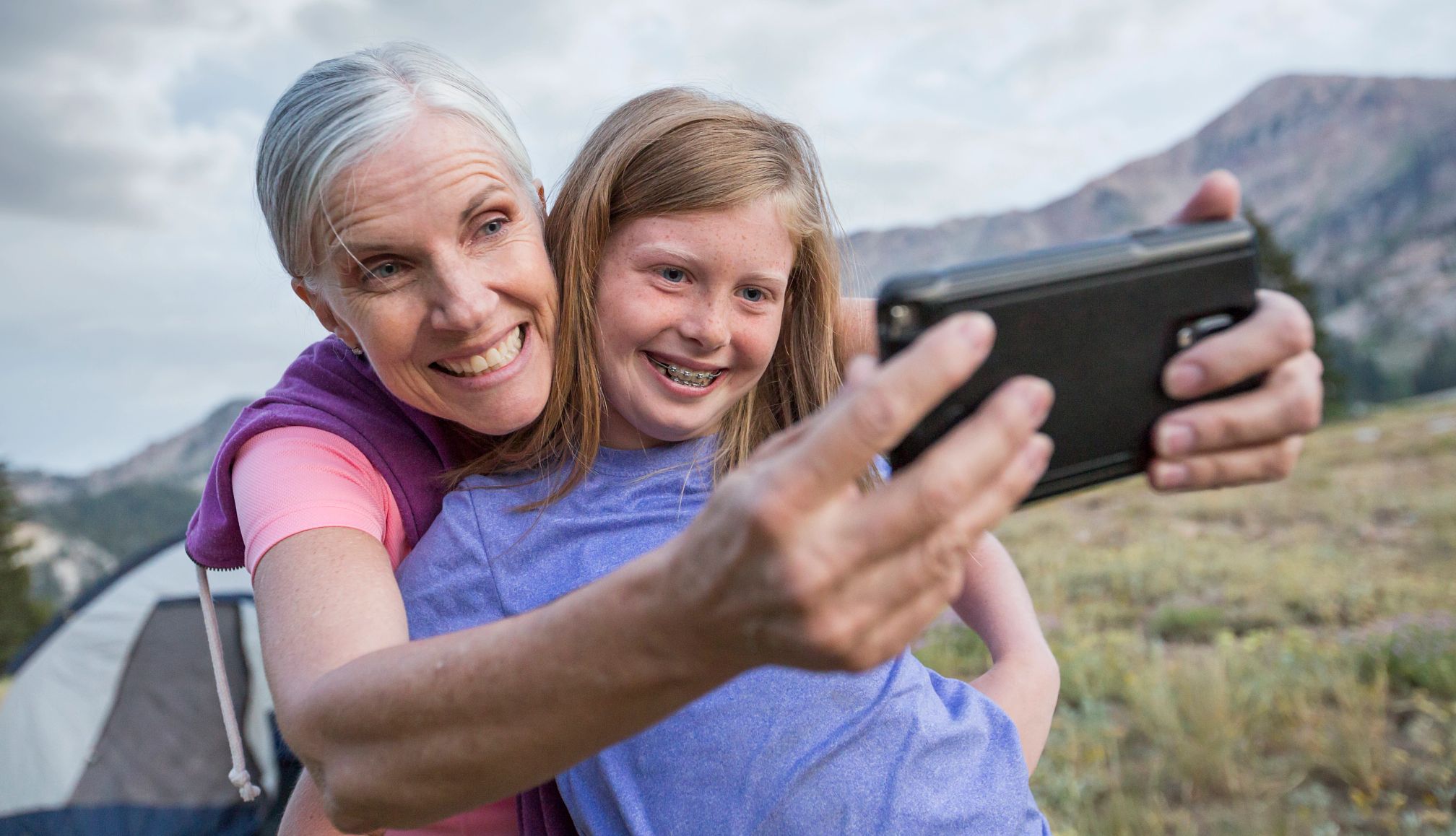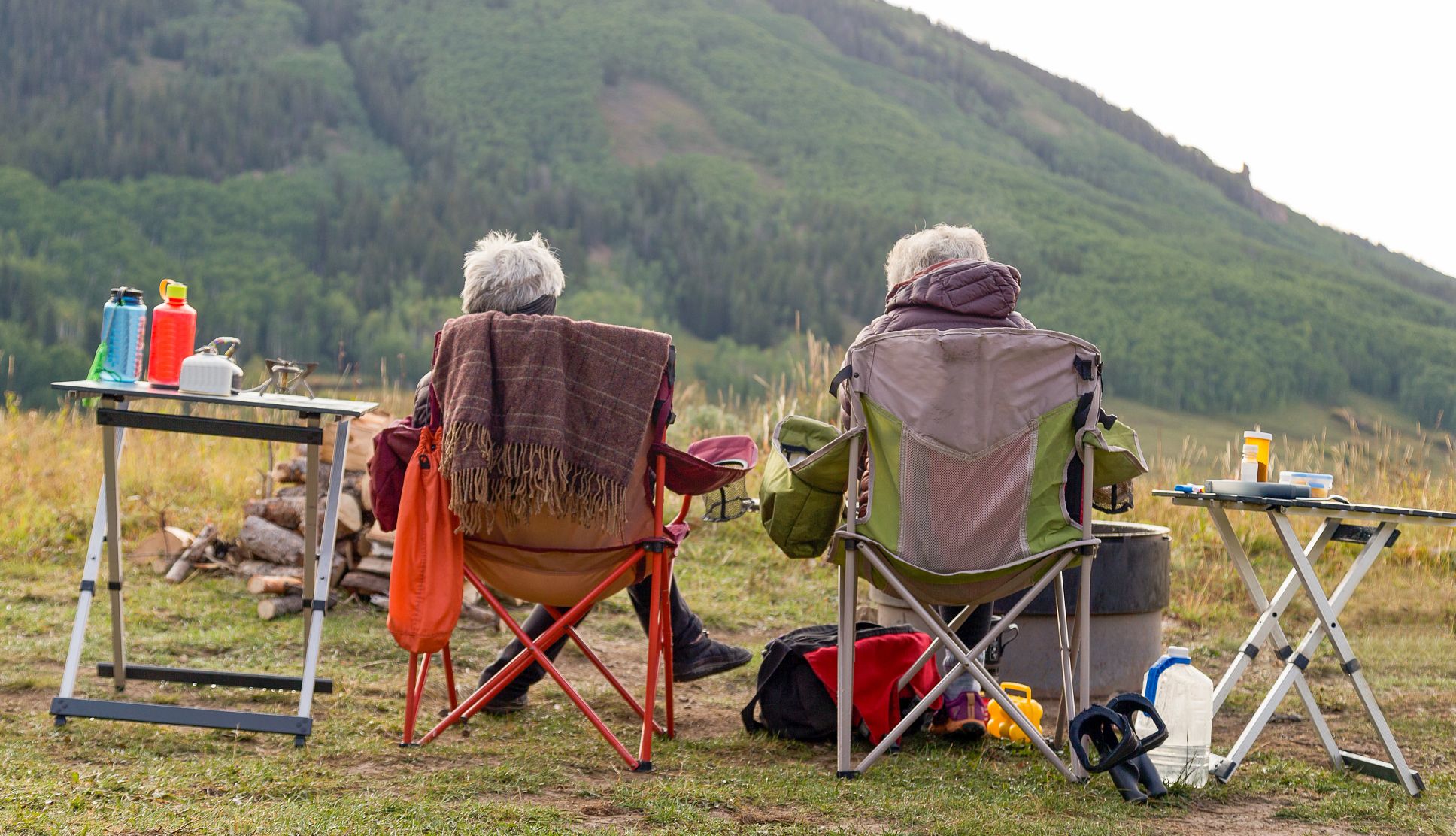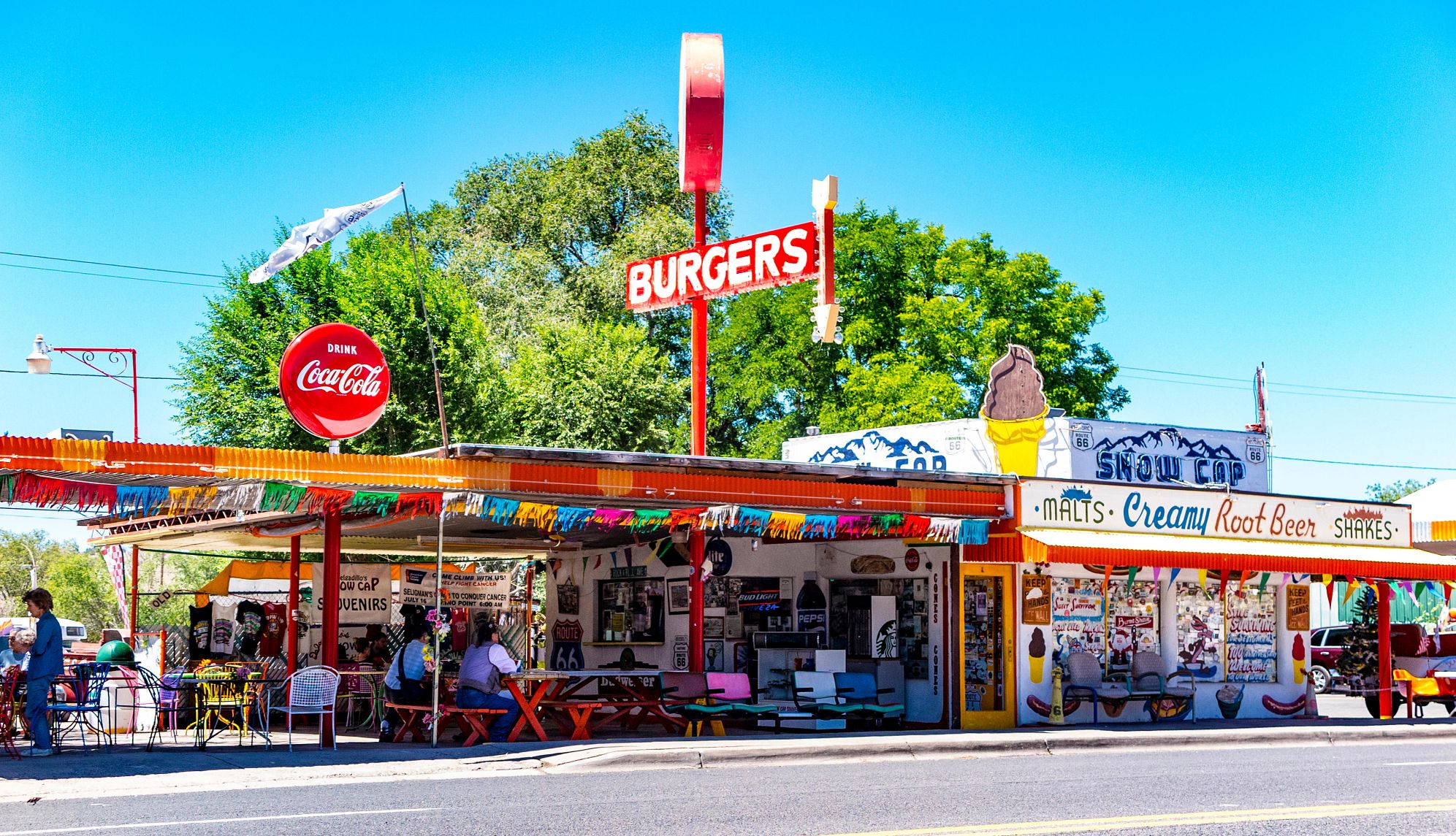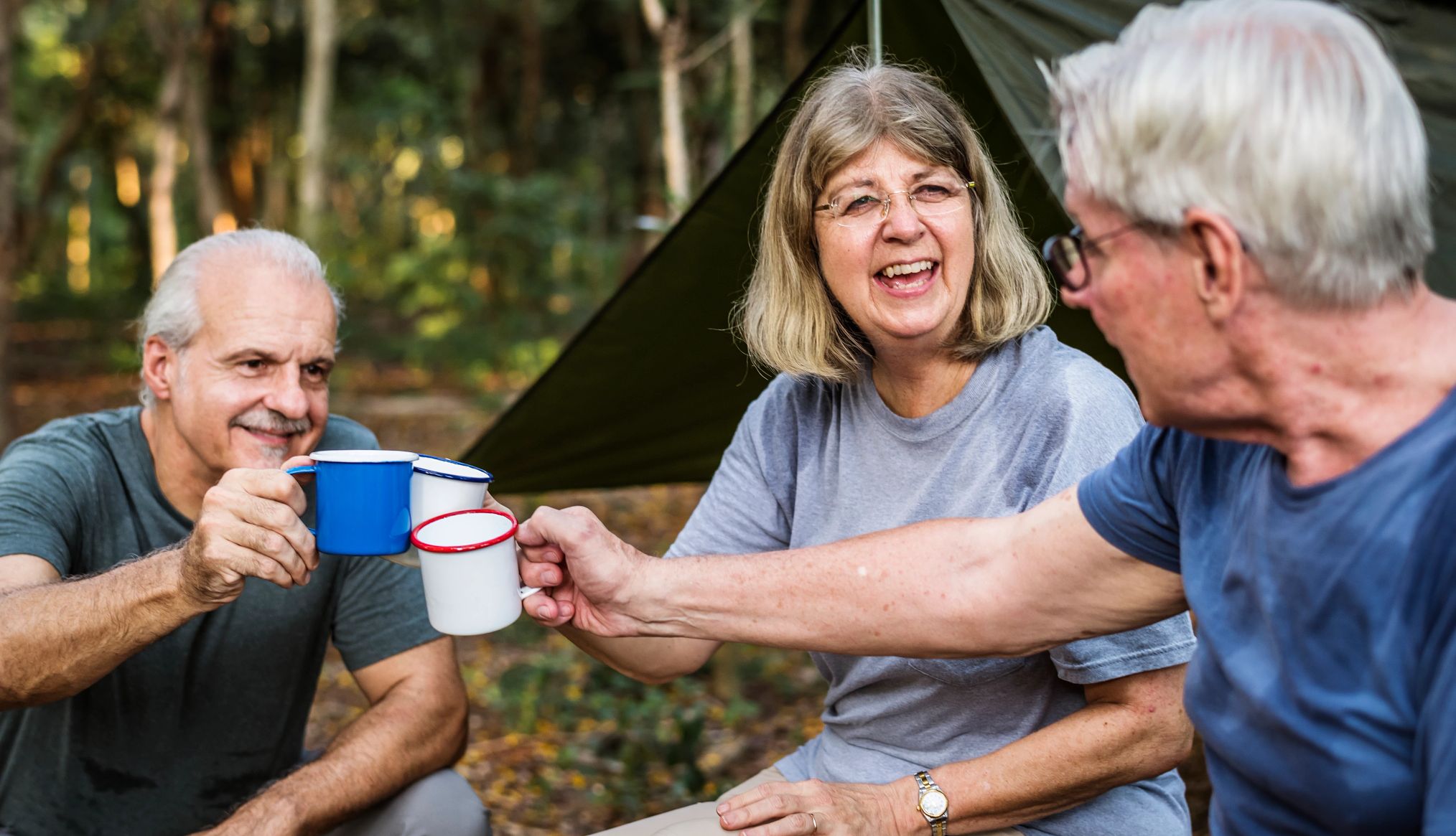AARP Hearing Center
If you’re a first-time camper, the idea of cooking in the great outdoors — or in the cozy confines of an RV — might feel a bit daunting. But with a little preparation and the right mindset, cooking on your camping trip can become one of the most rewarding parts of the experience.
I have hiked, biked, and camped in over 100 state and national parks across the country by myself, with friends, and with my nieces and nephews. I’ve done both car camping and wilderness camping, where you have to hike your gear in and out many miles and where there are no services (no bathrooms, water, waste disposal), etc. When I first started camping, I mostly relied on fresh fruit and peanut butter sandwiches simply because they were the easiest solution.
Whether you’re brewing coffee at sunrise or grilling up steaks under the stars, here’s what every new camper should know about outdoor and RV cooking.

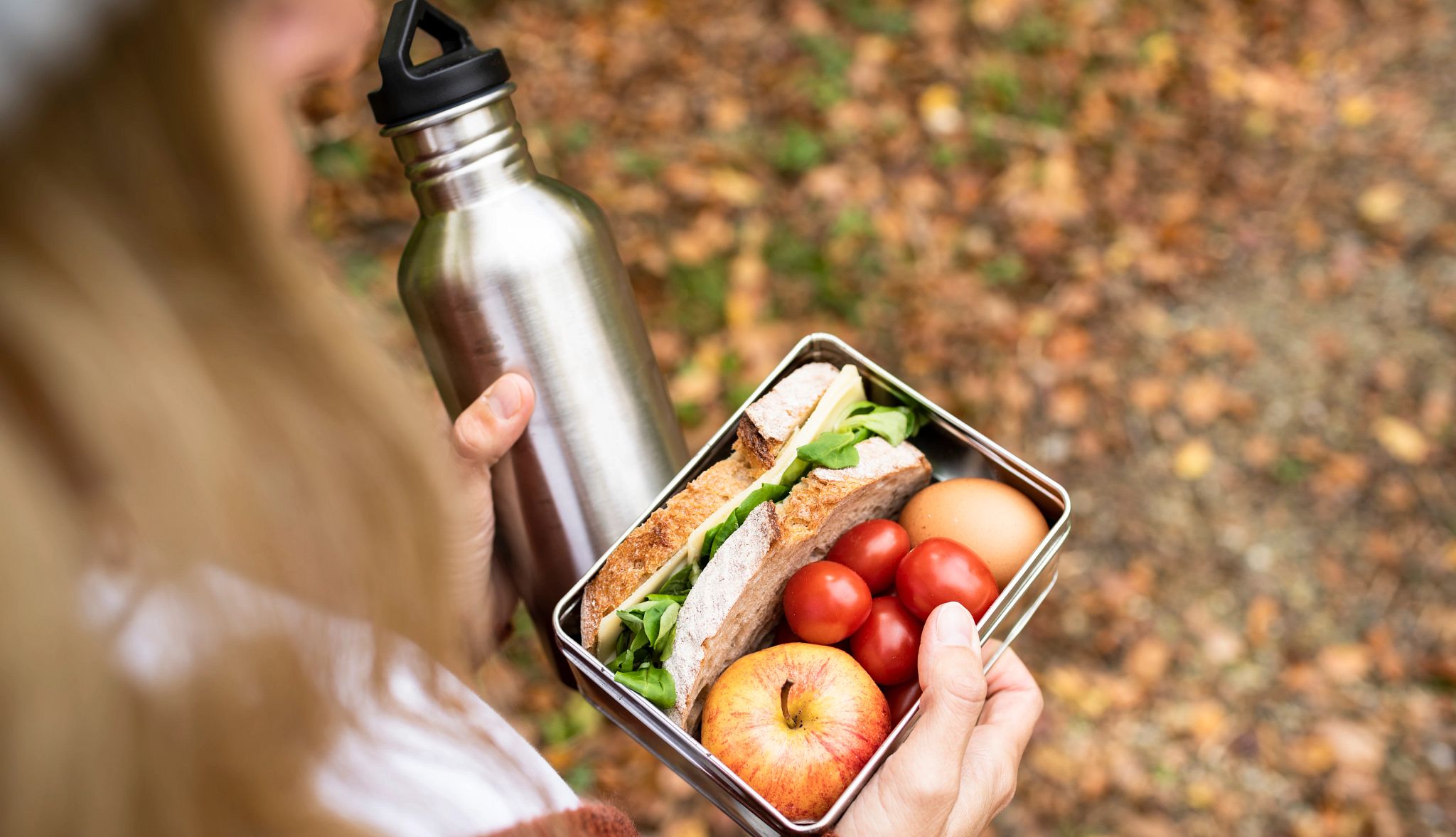
Meal plan before you go
One of the biggest mistakes new campers make is showing up at the site without a clear idea of what they’ll eat. Meal planning is crucial (and can save a lot of money), especially if your campground doesn’t sell food and you’re far from a supermarket.
According to KOA Campgrounds, which owns and operates over 500 campgrounds in the United States, 29 percent of Generation X (ages 45-60) look to purchase food available at the campground or outdoor resort, but they are also much more likely than other generations to bring and prepare food at the campsite themselves. Meanwhile, boomers (age 61-79) are prepared to cook at the campsite, but 40 percent of them go off-site to dine at nearby restaurants, the highest percentage of any generation.
To prepare for campsite cooking, consider how many meals you’ll need for each person, how much storage space you have and what kind of cooking equipment you’ll bring.
Start with simple meals that require minimal ingredients and preparation, such as foil packet meals, pre-marinated meats, pasta dishes and hearty sandwiches. Tinned fish, pasta and crackers also work well. These products are sold at outdoor stores such as REI and Patagonia. Don’t forget snacks and drinks (chips, trail mix, fresh fruit, cheese sticks, cured sausage) — and always bring a little extra food in case plans change.
For an especially easy trip, consider packing ready-to-eat meals, such as dehydrated pasta, rice, and chili mixes. These meals are sold at REI and Bass Pro Shops and require nothing more than hot water.

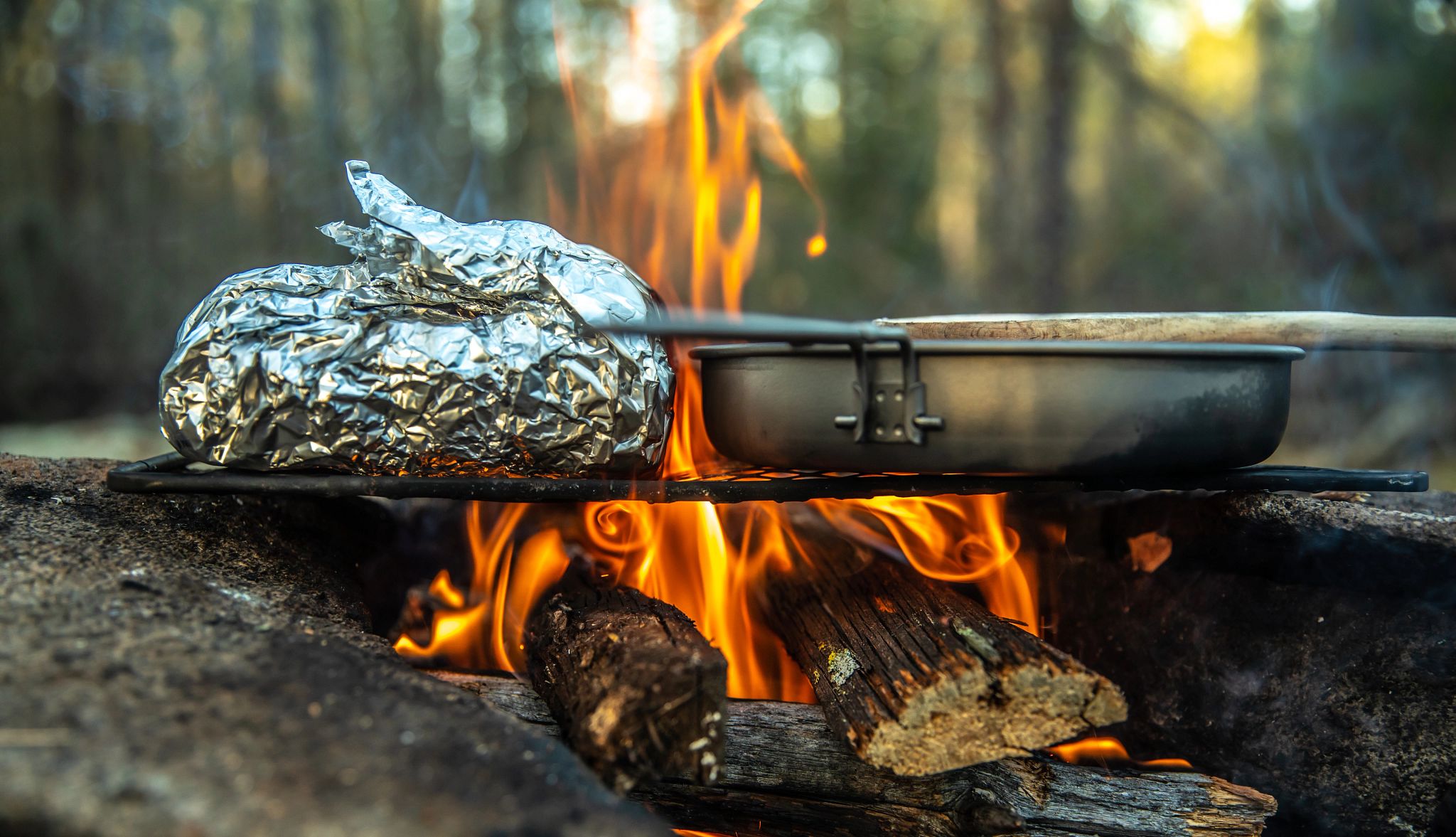
Understand your cooking setup
Your cooking experience will vary greatly depending on whether you’re in a tent campsite or a fully equipped RV. From my experience, tent campers typically rely on campfires, propane stoves or portable grills. RVs often come with small stovetops, ovens, microwaves, and refrigerators, but space and power limitations still exist.
Before your trip, test your gear to ensure your stove works, your fuel canisters are full and you understand how to operate everything safely.

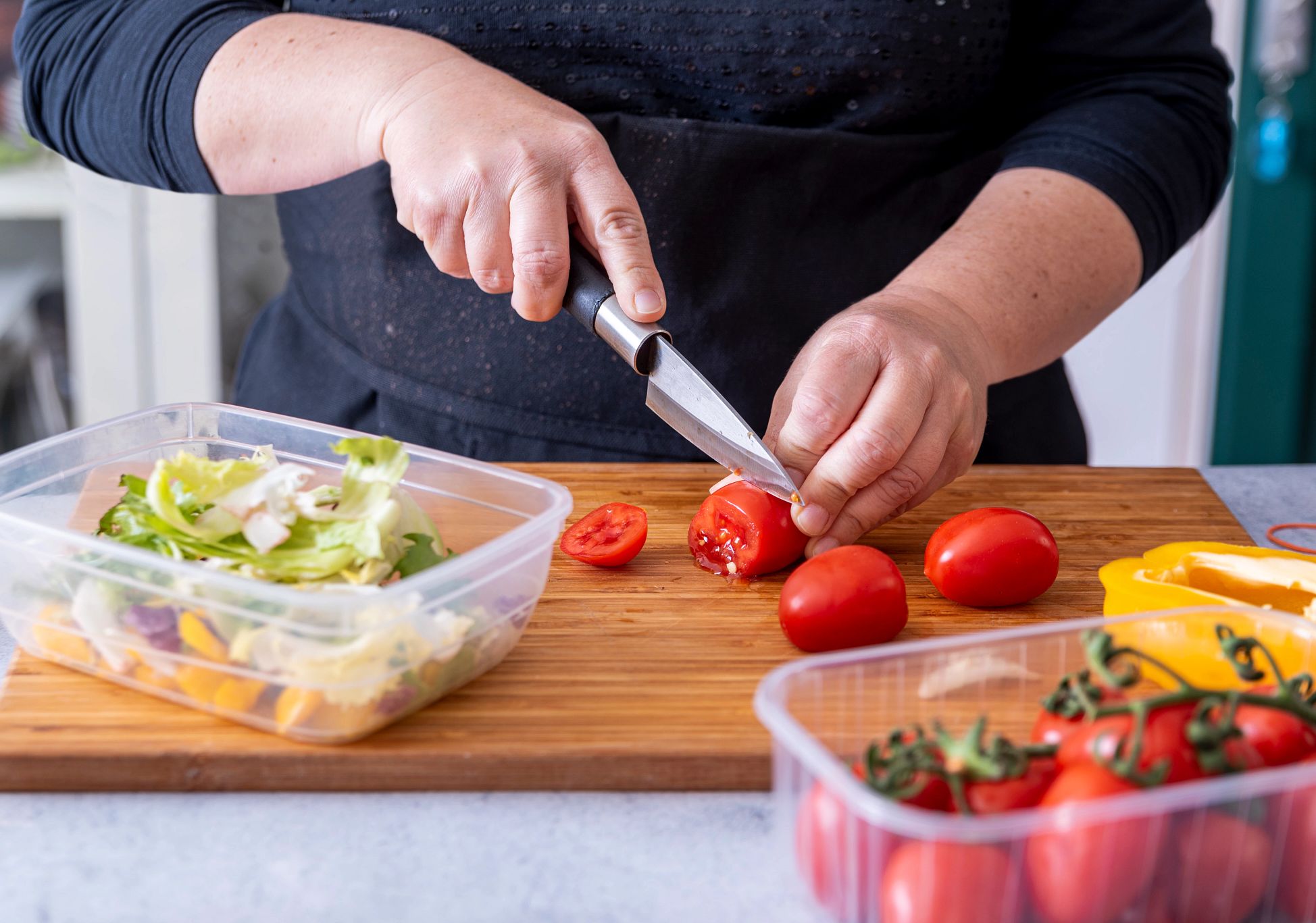
Prep at home
The more prep work you do at home, the smoother things will go at camp. Chop vegetables, marinate proteins, and pre-measure spices before you leave. Store chopped ingredients in reusable containers or zip-top bags for easy access. This not only saves time and reduces mess, but it also means fewer utensils and surfaces to clean in the wild.
If you’re planning multiple meals, label your containers so you know what everything is. Vacuum-sealing or freezing meals in advance is a great way to keep food fresh longer, especially if you’re using a cooler instead of a fridge. Make-ahead meals like chili, soup, or curry can all be frozen and reheated at camp, making for a hassle-free dinner.































































